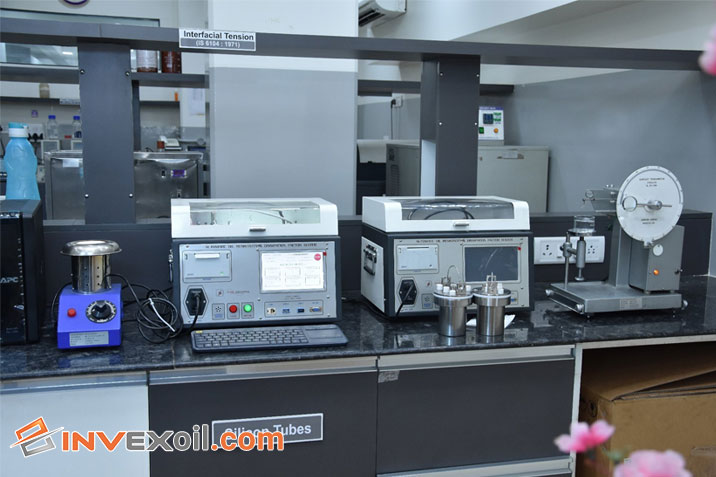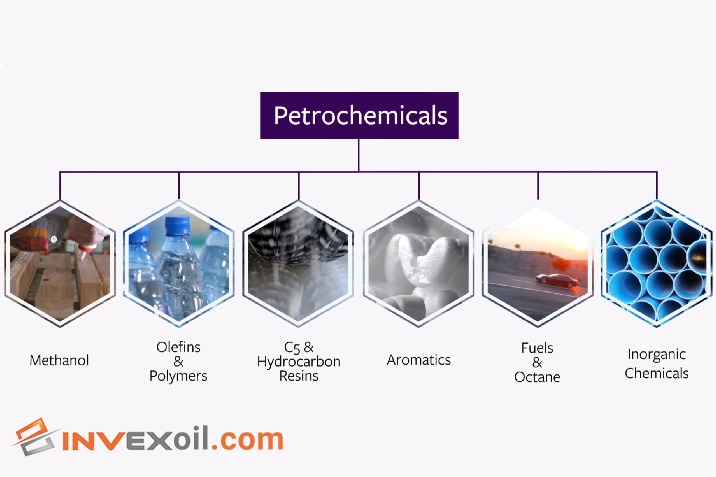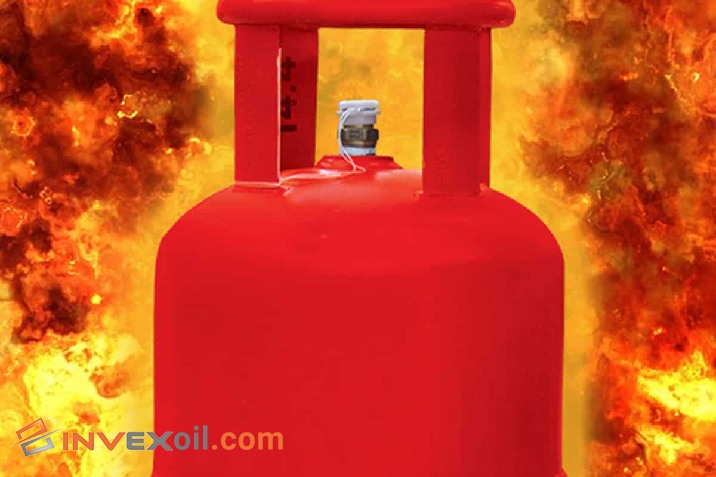Types of transformer oil testing play a crucial role in ensuring the reliability and performance of electrical equipment. When it comes to maintaining the health of transformers, regular transformer oil testing types are indispensable. Transformer oil serves as both a coolant and insulator, and over time, it can accumulate contaminants like water, gases, and sludge. Effective transformer oil treatment becomes necessary to remove these impurities and restore the oil to its optimal condition. By conducting tests such as dissolved gas analysis (DGA), water content analysis, and power factor tests, experts can identify potential issues and take appropriate remedial actions through treatments like filtration and dehydration, enhancing the equipment’s longevity and performance.
Table of Contents
What is precisely Transformer Oil Properties?
For understanding types of transformer oil testing, It’s important to know What is exactly Transformer Oil Properties? Transformer oil, also known as insulating oil, is a critical component of electrical transformers, serving essential functions in cooling and insulation. This specialized oil possesses unique properties that make it suitable for these critical tasks. Its chemical composition comprises hydrocarbons and additives, ensuring high dielectric strength and low viscosity for efficient heat dissipation. Transformer oil plays a vital role in cooling the transformer’s core and windings, preventing overheating, and ensuring smooth operation.
Chemical Composition of Transformer Oil
Transformer oil primarily consists of hydrocarbons derived from crude oil refining. It typically contains saturated aliphatic hydrocarbons and aromatic compounds. The presence of additives enhances its resistance to oxidation and improves overall performance. The chemical composition contributes to the oil’s insulating properties, facilitating effective electrical insulation within the transformer.
Role of Transformer Oil in Cooling and Insulation
Transformer oil serves a dual purpose in cooling and insulating electrical equipment. Its low viscosity ensures efficient heat transfer, dissipating heat generated during transformer operation. By removing excess heat, the oil helps maintain the transformer’s optimal temperature, preventing damage to its internal components. Additionally, the high dielectric strength of transformer oil enables it to insulate and separate electrical conductors, preventing electrical breakdown and ensuring the safe and reliable functioning of the transformer.
Common Contaminants in Transformer Oil
Transformer oil can become contaminated by various substances, impacting its performance and potentially causing damage to the equipment. The most common contaminants include:
Water Contamination and its Effects
Water is a common contaminant in transformer oil and can lead to reduced dielectric strength and insulation efficiency. Even a small amount of water can cause corrosion and accelerate insulation breakdown.
Oxidation and Sludge Formation
Oxidation occurs when the oil reacts with oxygen, leading to sludge formation and the formation of acidic by-products. This can result in decreased oil stability and compromised transformer performance.
Presence of Dissolved Gases
Dissolved gases, such as methane, ethylene, and acetylene, can indicate potential faults in the transformer. Monitoring these gases through DGA is essential to detect issues early and prevent equipment failure.
Particulate Matter and Its Impact
Particulate matter, such as dust and debris, can accumulate in the oil and reduce its effectiveness as a coolant and insulator. This may result in overheating and decreased transformer lifespan.
Learn more about types of Transformer Oil Testing
Understanding the different types of transformer oil testing is vital for ensuring the reliability and performance of electrical transformers. One such essential test is Dissolved Gas Analysis (DGA).
Dissolved Gas Analysis (DGA)
DGA is a diagnostic tool used to detect and analyze key fault gases dissolved in transformer oil. By monitoring gases like methane, ethylene, and acetylene, experts can identify potential faults and abnormalities in the transformer.
| Gas | Interpretation |
| Methane | Overheating or hot spots |
| Ethylene | Arcing or partial discharges |
| Acetylene | Severe arcing or high-energy discharges |
| Hydrogen | Cellulose breakdown or overheating |
| Carbon Dioxide | Overheating or incipient faults |
Identifying Key Fault Gases
Interpreting DGA results involves identifying specific fault gases and their corresponding interpretations. For instance, the presence of high levels of methane may indicate overheating, while increased ethylene could suggest arcing and partial discharges.
Interpreting DGA Results
Dissolved Gas Analysis (DGA) is a critical method for assessing transformer health. Analyzing the presence and concentration of fault gases in transformer oil can reveal potential issues, such as overheating or partial discharges. Interpreting DGA results requires expertise in identifying specific gases and their corresponding fault indications.
| Gas | Potential Fault Indication |
| Methane | Overheating or hot spots |
| Ethylene | Arcing or partial discharges |
| Acetylene | Severe arcing or high-energy discharges |
| Hydrogen | Cellulose breakdown or overheating |
| Carbon Dioxide | Overheating or incipient faults |
Water Content Analysis
Water content analysis is another essential aspect of transformer oil testing. Measuring moisture levels in the oil helps assess its condition and detect possible leaks or water ingress. Excessive water can reduce the oil’s insulating properties, leading to potential equipment failure.
| Moisture Content (%) | Condition |
| 0.5 – 2 | Excellent |
| 2 – 5 | Good |
| 5 – 10 | Fair |
| Above 10 | Poor, requires attention |
Measuring Moisture Levels
Accurate measurement of moisture levels is crucial in determining the transformer’s overall health. Regular monitoring ensures timely detection of water-related issues, allowing for appropriate maintenance actions.
Importance of Water Content in Transformer Oil
Maintaining the right water content in transformer oil is vital for efficient equipment operation and longevity. Monitoring and adhering to recommended water content limits are key to preventing transformer breakdown and ensuring reliable performance. Types of transformer oil testing can be used to assess the water content of the oil and identify any potential problems.
| Transformer Type | Maximum Water Content (%) |
| Sealed type transformers | 0.5 |
| Breather type transformers | 2 |
Acid Number Test
The Acid Number Test is a crucial component of transformer oil testing, assessing the presence of acidic by-products in the oil.
Acid Number Oil condition table that provides insights into the different levels of acidity in oil, highlighting its importance in determining the need for oil change.
| Acid Number | Oil Condition |
| 0.01 – 0.05 | Excellent |
| 0.05 – 0.10 | Good |
| 0.10 – 0.50 | Fair, requires attention |
| Above 0.50 | Poor, needs immediate action |
Detecting Acidic By-products
The Acid Number Test detects acidic by-products that result from oil degradation due to oxidation or contamination. These by-products can lead to increased acidity, compromising the oil’s insulating properties.
Significance of Acid Number in Transformer Oil
Interpreting the acid number provides insights into the oil’s condition and potential degradation. A higher acid number indicates increased acidity and the need for preventive measures to maintain the transformer’s health. There are a number of different types of transformer oil testing that can be performed to assess the condition of the oil. These tests include acid number testing, dielectric strength testing, water content testing, flash point testing, color testing, and dissolved gas analysis.
| Acid Number Range | Interpretation |
| 0.01 – 0.05 | Healthy oil, no significant issues |
| 0.05 – 0.10 | Early signs of degradation |
| 0.10 – 0.50 | Moderate degradation, attention needed |
| Above 0.50 | Severe degradation, immediate action required |
Power Factor Test
The Power Factor Test is a significant aspect of transformer oil testing, evaluating the dielectric losses and insulation condition of the equipment.
| Power Factor Value | Insulation Condition |
| 0.001 – 0.005 | Excellent |
| 0.005 – 0.010 | Good |
| 0.010 – 0.030 | Fair, requires attention |
| Above 0.030 | Poor, immediate action needed |
Understanding Dielectric Losses
Dielectric losses occur due to imperfect insulation in the transformer. The Power Factor Test measures these losses, indicating how efficiently the oil insulates the electrical conductors.
Interpreting Power Factor Test Results
Interpreting Power Factor Test results is essential in determining the insulation condition. A low Power Factor value signifies better insulation, while a high value may indicate potential issues requiring attention.
| Power Factor Value | Interpretation |
| 0.001 – 0.005 | Strong insulation, no issues |
| 0.005 – 0.010 | Satisfactory insulation |
| 0.010 – 0.030 | Potential insulation concerns |
| Above 0.030 | Inadequate insulation, urgent action required |
Interfacial Tension Test
The Interfacial Tension Test is a critical method in transformer oil testing, enabling the detection of oil degradation and assessing its overall quality. This table provide Interfacial Tension data to
| Interfacial Tension (mN/m) | Oil Quality |
| 40 – 50 | Excellent |
| 30 – 40 | Good |
| 20 – 30 | Fair, requires attention |
| Below 20 | Poor, immediate action needed |
Detecting Oil Degradation
The Interfacial Tension Test measures the force at the oil-water interface, indicating the presence of impurities and degradation products. A decrease in interfacial tension may suggest oil degradation.
Significance of Interfacial Tension in Transformer Oil
Interfacial tension is an essential indicator of oil quality. Monitoring changes in tension values helps identify potential issues early, allowing for timely maintenance and preventing further deterioration.
| Interfacial Tension (mN/m) | Interpretation |
| 40 – 50 | The strong oil quality, no concerns |
| 30 – 40 | Satisfactory oil condition |
| 20 – 30 | Potential oil degradation |
| Below 20 | Oil degradation requires action |
Dielectric Strength Test
The Dielectric Strength Test is a crucial component of transformer oil testing, assessing the insulation performance and overall health of the transformer.
| Dielectric Strength (kV) | Insulation Performance |
| 30 – 50 | Excellent |
| 20 – 30 | Good |
| 15 – 20 | Fair, requires attention |
| Below 15 | Poor, immediate action needed |
Measuring Insulation Performance
The Dielectric Strength Test is one of the types of transformer oil testing that measures the maximum voltage the oil can withstand before breaking down, indicating the insulation’s effectiveness in preventing electrical failure.
Importance of Dielectric Strength Test
The Dielectric Strength Test is vital in ensuring the transformer’s reliability and safety. Regular testing helps detect any potential weaknesses in the insulation, enabling timely maintenance to prevent costly breakdowns.
| Dielectric Strength (kV) | Interpretation |
| 30 – 50 | Strong insulation, no issues |
| 20 – 30 | Satisfactory insulation |
| 15 – 20 | Potential insulation concerns |
| Below 15 | Insulation breakdown requires action |
Furan Analysis
Furan Analysis is a crucial aspect of transformer oil testing, used to identify paper degradation in the transformer’s insulation system.
| Furan Concentration (ppm) | Paper Degradation Level |
| 0 – 100 | Negligible |
| 100 – 300 | Slight |
| 300 – 1000 | Moderate, requires attention |
| Above 1000 | Severe, immediate action needed |
Identifying Paper Degradation
Furan Analysis measures the concentration of furanic compounds in the oil, which are by-products of paper degradation. Elevated levels of furans may indicate potential issues with the paper insulation.
Interpreting Furan Analysis Results
Interpreting Furan Analysis results is vital in assessing the condition of the paper insulation. Higher furan concentrations suggest increased degradation, prompting further investigation and necessary actions.
| Furan Concentration (ppm) | Interpretation |
| 0 – 100 | Minimal paper degradation |
| 100 – 300 | Early signs of paper degradation |
| 300 – 1000 | Significant paper degradation |
| Above 1000 | Severe paper degradation, requires action |
Conclusion
this comprehensive article sheds light on the significance of transformer oil testing in ensuring the smooth and efficient functioning of transformer systems. Exploring various testing methods such as Dissolved Gas Analysis, Interfacial Tension Test, Power Factor Test, and Furan Analysis, the article highlights their crucial role in detecting potential faults and degradation. Furthermore, it emphasizes the importance of regular testing intervals, equipment maintenance, and successful case studies that demonstrate the positive impact of testing on equipment lifespan.
FAQ
Now, there are some most common questions about this topic and you can read them to find your answers on them:
What are the different types of transformer oil testing?
There are some types of transformer oil testing, Dissolved Gas Analysis (DGA), Interfacial Tension Test, Moisture Content Analysis, Acid Number Test, and Power Factor Test.
How do DGA analyzers help in transformer oil testing?
DGA analyzers detect and analyze dissolved gases in transformer oil, providing insights into potential faults and equipment conditions.
Why is regular testing important for transformer oil?
Regular testing ensures early detection of faults and degradation, enhancing transformer performance and prolonging its lifespan.

Hello, This is Matteo Hudson Copywriter from InvexOil. We are here to provide super-important content to help you learn more easily and be involved in the world of Petroleum and Chemistry. We are here to answer your questions, help you to have better services, and also find the best solution for your problems. Don’t be shy and ask your questions in the comment box or call our number. If you want to connect with me directly, you can search for my name on Linkedin.







